Media | Articles
According to You: The Best Starter Classics
Living in most car-centric parts of North America almost guarantees you an ample supply of vehicles for sale, and sometimes those vehicles can be considered classics. Many can be considered a “starter” classic for a budding enthusiast, but my suggested choice didn’t resonate with anyone. Perhaps there are too many cheap Ford Explorers where I live, and not enough vintage trucks/classic cars for the same prices.
But validation from others is not why the According To You series exists. Instead I choose to get the ball rolling, and let the Hagerty Community take it from there. And it clearly was a success, with great suggestions for starter classic vehicles from a variety of backgrounds. So let’s see how you answered the question.
First-Generation Mustang

@gerry: I think the 1st gen Mustang are a great place to start. There are plenty of units available, you can get a car from with a tree growing through the hood to a fully restored example, and everything in between for whatever your ability may be. Every part is readily available, there’s no searching for obscure parts.
@Mustang Kenny: I agree. They made so many that are still out there and many places make parts. And unlike newer cars that go down in value, classic cars go up in value so you get to enjoy your investment hands on.
@hyperv6: First gen Mustangs have been way under priced for years unless it was a Shleby.
Marketplace
Buy and sell classics with confidence
@RichyRich: First gen Mustang…
BMW 2002
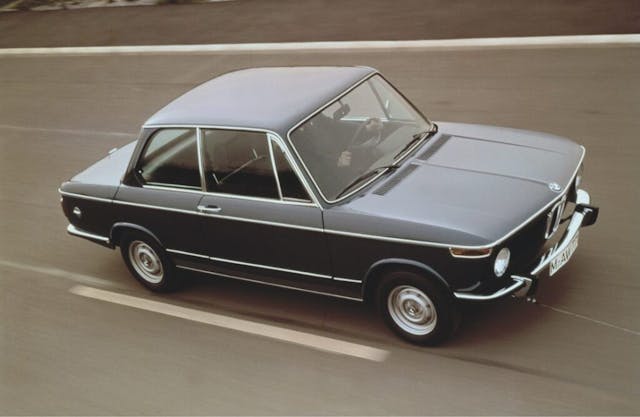
@David: For the first time owner of a classic, I would recommend cars that sold well when new, so there are plenty of examples from which to choose, so you’re not forced into picking something beyond your skills. This also leads to cars that with well-supported parts networks and active owner groups in virtually every part of the country. Mustangs, Camaros, Chevelles, Volkswagens and any number of pickups from Chevy and Ford. Did I follow my own advice?
No. I chose a BMW 2002, which is isn’t a BAD choice, but not the best choice.
@Ken: BMW 2002 is a great choice, IMO. Parts are still readily available and its easy to work on. It has the classic look, and it was my first classic as well.
@Stu: Those are great cars. Plenty of them are in Southern California.
Any(?) Truck With A Good Frame
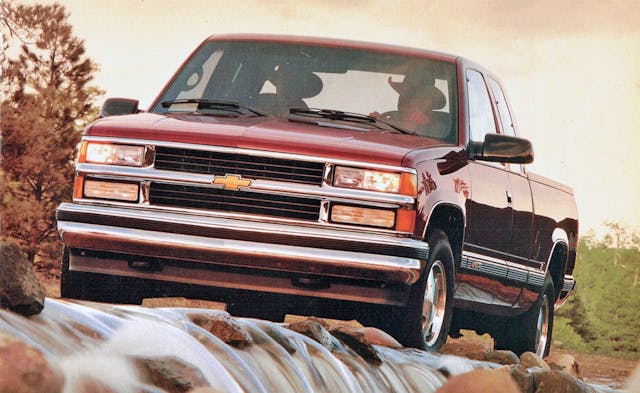
@hyperv6: The one to do is a truck. Ford or more so a Chevy. if you have a good frame you can buy about any needed part to restore one. The engines were made in the millions per year not in total. The best part is a well restored truck can bring a good profit as they are selling well once restored.
Most Camaro, Mustangs and Chevelles are priced out of reach anymore. Rusted shells can go for $10K. Find a basic truck on a farm and restore it, the 1960-1970’s examples are prime right now for restoration parts. The profit made on this can be applied to a better car at the next level.
@snailish: Truck is the entry-level answer all day long. Where I live the 60s trucks (especially GM) are now really pricey and the 70s are starting to catch up. If you can snag a good one at a decent price do it. Hagerty likes the term Radwood for anything 90s, and this is the sweet spot of hobby entry point.
While you still will see the odd GMT400 truck being used as a beater work truck they are declining fast. Prices on pristine ones in sought after specs (454 SS, shortbox 4×4, etc.) are rising but generally not yet out of reach. 90s trucks are a nice blend of modern/archaic. They made millions of them and they are hitting the bottom of depreciation curve. Modern mechanics have worked on them (unless it’s a really new mechanic at a dealership I suppose). They aren’t giant bloated things, yet they exceed most users truck needs for 99% of the things you want to do (if you need a heavy-duty towing rig –buy a 3500).
@Glenn: Any GM truck from 1973-87 (Square Body) or the C/K series from ’88-97. Easy to work on, and parts availability both new and used, is great. I did a mild refresh on a ’92 long bed a few years ago and was amazed at how easy it was to work on.
C5 Corvette
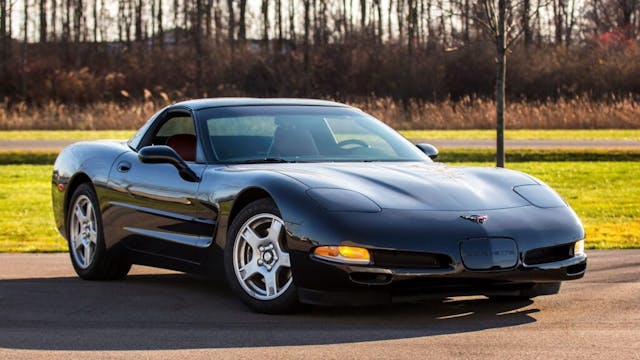
@MeJ: I’ll vote a C5 Corvette. They are reasonably affordable, easy to maintain, mod, and enjoy. I believe these actually will be considered “classic” one day.
@hyperv6: As a owner of a C5 I will agree. They are the performance bargain right now. as a low mile car can still be had cheap. You may never get split window Corvette money for a C5 since there are so many, but if in good condition they will maintain and grow some value as time goes on.
BMW 3 Series
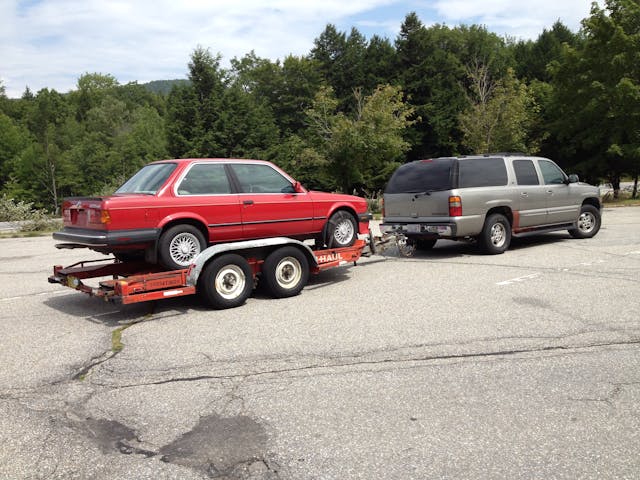
@TG: 3 Series Beemer. You can get them at throw-away car prices, and there are plenty of parts for them. Not the easiest things to work on, but most starter collectors aren’t going to get into serious engine work anyway.
MGB
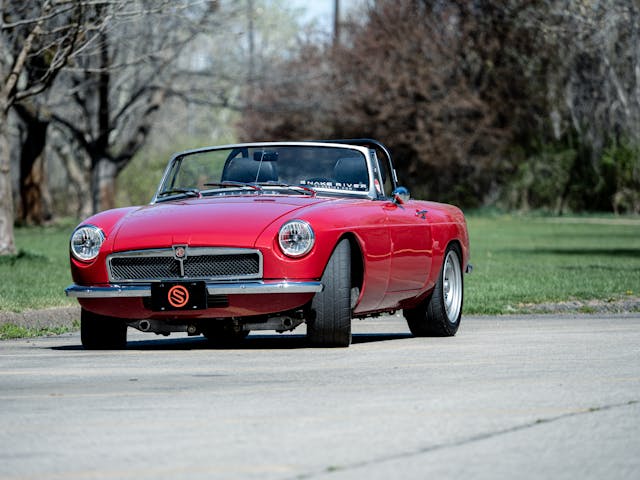
@MGWrench: I think it depends on the purpose of your starter classic. If you want to start a collection, but you’re not interested in maintaining it, then buy the best example you can afford of the car that excites you the most and enjoy.
If you want to learn how to restore and maintain a classic car, then I would recommend an MGB or MGB-GT. They are simple cars that are still affordable and with care can be reliable drivers, but the rules that must be adhered to are: 1. Make sure you keep oil in the carburetor dampers, and 2. Most carburetor problems are actually ignition, so install an electronic points replacement.
C4 Corvette
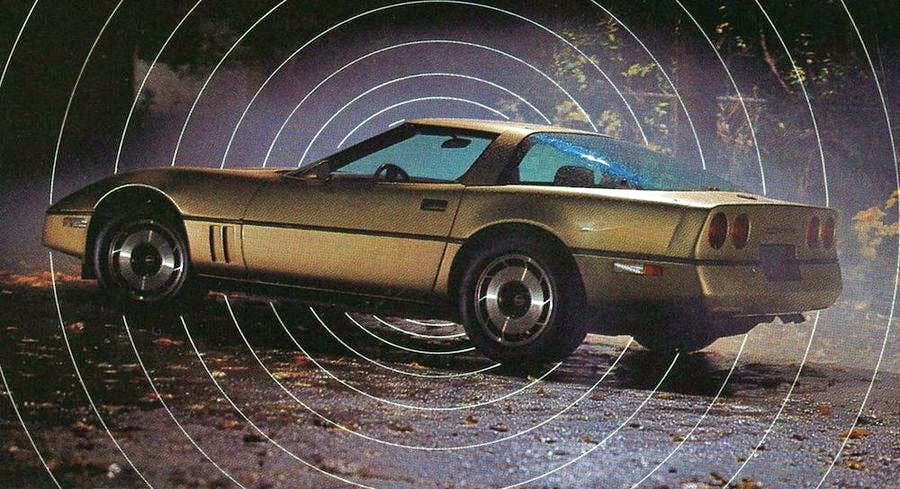
@Vehicle Nanny: If performance is your desire, I recommend a C4 Corvette (1986 or newer). The digital dash is not the nightmare some might think. Even 20 years ago I was able to fix mine for about $50 (and this was before YouTube!).
Tri-Five Chevy
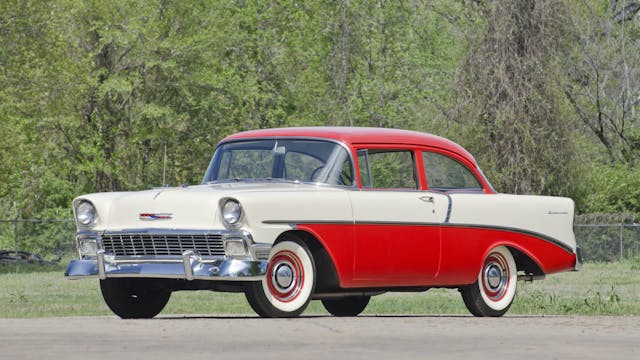
@Bob: I would tell them to start with a Tri-Five Chevrolet, 2 door. All parts are available, so find one that has the least amount of rust (they all have some rust) do not worry about the drivetrain. Do all your own work, the internet is full of advice, IMO.
Volvo 122

@JH: Volvo 122 series hands down! I am thinking of youth, or young adults, and a good starter classic that is durable, financially accessible, easy to work on, enough manufactured to have a good parts supply but still rare enough to seem unique, and a safe and fun car to drive! The Volvo 122 can be restored, modified to rally specifications, or built as a daily driver.
When built to rally specifications, the Volvo cars were a worthy match for many of the other cars of their era. The Volvo 122 is far easier to work on with better parts availability and less expensive to acquire and maintain than many of the vehicles mentioned earlier.
Supercharged GM W-body

@Dave: If you can find one, get a 1997 to 02 Buick Regal GS. It’s a supercharged, 240 HP sleeper with the bulletproof 3.8 V6. I did a quick search and found one in pristine condition, 64k miles, asking price $6,995.
@Sajeev Mehta: Fantastic choice! I’d add all of the Regal’s W-body supercharged brothers from Chevrolet and Pontiac, as they all have great performance with dirt cheap replacement parts.
Volvo 240

@Howard: Volvo 240, especially a later model. Not sexy or quick, but younger people appreciate the cool factor of the quirkiness.
Chevrolet Corvair
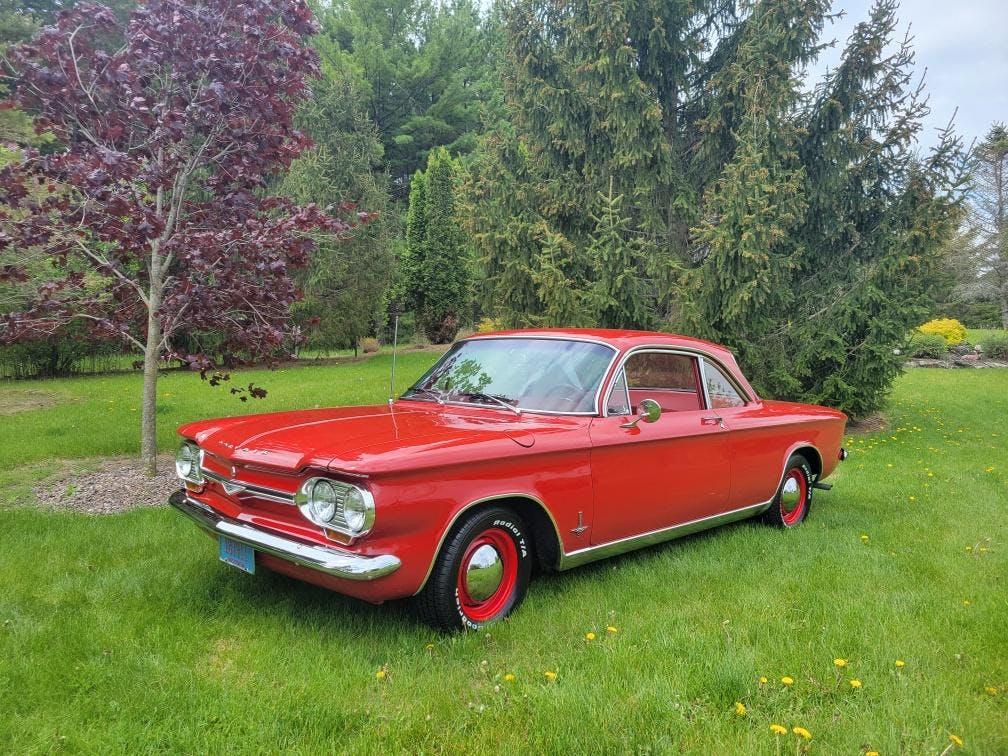
@Paul: If you want something a bit different look at a Corvair. They’re still relatively inexpensive to own and restore. There are Corvairs for every taste. There are cars of all kinds plus trucks if you like. They’re still competitive in vintage racing as well as great cruisers. Parts are fairly easy to source and they’re not too complicated for a beginner. There are tons of info about them as well.
Mercedes-Benz 280 SL
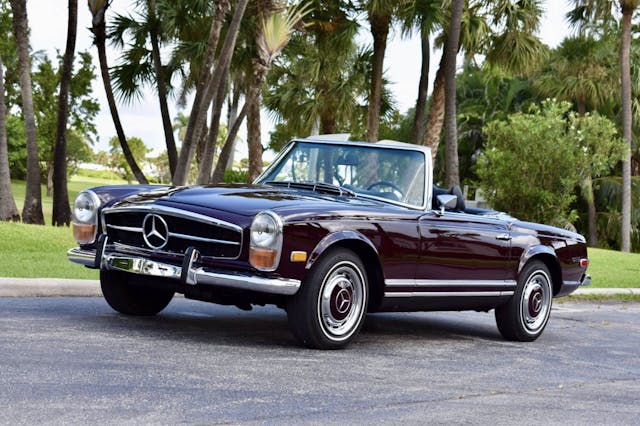
@Ramsey: Mercedes-Benz 280SL! Reliable, respected, readily available support, and almost always the same value when you’re selling as when you’re buying!
Ford Model A
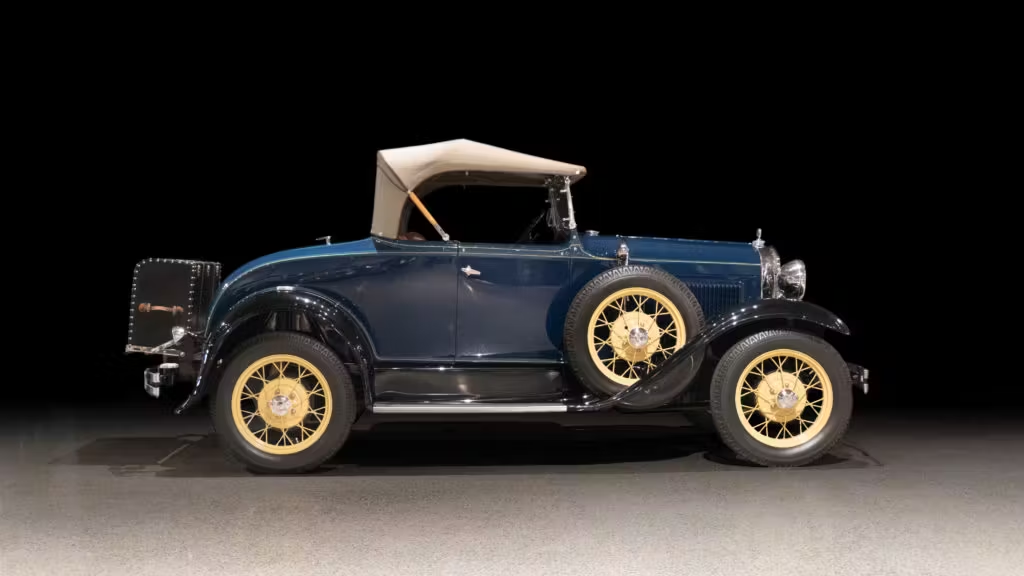
@Jim: I will take a slightly different tack with this question. First, the key words here are “first” and “classic.” In that context, I suggest a first classic should be something designed for the person who is actually entering our world but has little to no experience with either cars or mechanical work in general.
My suggestion is then a bit off the wall: I recommend a Model A Ford, for the following reasons. They are plentiful; Henry literally made millions and a satisfying number are still out there. They are dirt simple. Model As are a wonderful basis for a person to really learn the fundamentals of how cars work. A copy of Martin Stockel’s book on automotive fundamentals and repair (first or second edition is recommended) is an excellent basic handbook for the newbie. A Model A specific book will be invaluable as well. The whole industry that we depend on for maintaining and restoring our classics today was founded on the maintenance, repair and restoration of Henry’s early cars. There is an enormous support for Model A parts and services. The cars themselves are not outrageously expensive, unlike more modern vehicles. Check out a current Hemmings listing for the Model A. Many are available from professionally restored trophy winners down to the bring a trailer category.
I suggest the new person look for a car that has been previously restored, several years ago, and preferably a home shop amateur job. These are amazingly cheap when compared against most other candidates. It will be something that can be repaired fairly easily, is not too expensive, and with simple tools can be repaired or rebuilt easily. By seeking out a previously home brewed restoration, the newbie will get something useful, will be inclined to use it around town and will usually be close to home if some “unscheduled” maintenance is needed. The qualities of simplicity found in the Model A will provide the new person everything needed to learn automotive fundamentals and enjoy a first classic without breaking the bank. Finally, when it is time to sell there will be a ready market for the history and entertainment the Model A represents.
@Septuagenarian Classic Enthusiast: Congratulations are in order, as this is the best answer to the question as stated in the title of the article. I agree completely. Well done Jim!
***
Check out the Hagerty Media homepage so you don’t miss a single story, or better yet, bookmark it. To get our best stories delivered right to your inbox, subscribe to our newsletters.
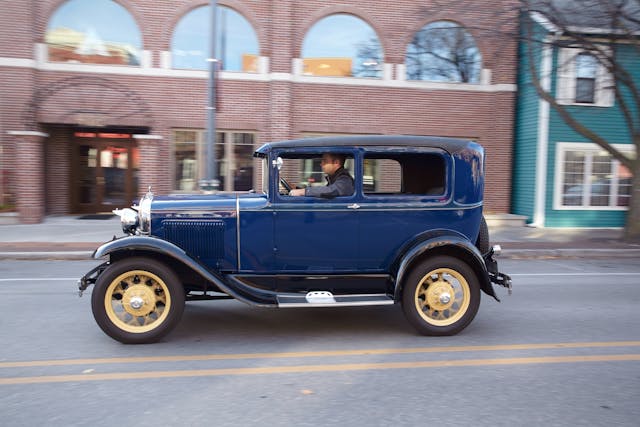

















Some cool picks. I like the 240 Volvo. Not sure about the 280 SL. Where would you find one that is reasonable to purchase in the first place? It’s a nice car for sure, but I don’t think of it as a beginner classic.
(And Sajeev, I didn’t mean to rip the Explorer idea quite so harshly!). Cheers!
No worries, me and the Explorer can handle it. I still see them running (barely) on collapsed suspensions on a regular basis…not cool enough to live the OBS (old body style) truck’s new life of prestige and admiration, but not dead like most Blazers of the era. They will always be winners. 🙂
The insane prices early Tahoes are now commanding in my area (clapped out plow trucks going for more than same-year cars in much better shape) and 4-runners say you are just slightly early calling the Explorer.
In the lower budget brackets you could do well in Explorer vs. not even getting a running example of some of the suggestions that were made, so I guess one’s “entry level budget” is pretty important.
——
The C4 suggestion is spot on too… undervalued for years, just creeping up for the halo models, but lots of not-halo were someone’s special car and kept well. These will be much more pricey 10 years from now I would guess.
What you see with Tahoes and 4Runners applies down here in TX, too. Those two are in OBS truck or C4 Corvette (especially the 4Runner) territory, and clapped out ones are still thousands more than an Exploder.
I think they will get there eventually – Gen I Explorers were boxy and great. I also think Bronco II’s are undervalued but they are starting to climb.
Gen 1 Explorers-manual transmission only!
The answer is always “Ranger”
Cheap, Solid, Simple and Reliable. First gen or restyled are in higher demand but the 93 and up are great. I have a 96 long box standard cab 4 liter 5 speed posi with 388000km
Those aren’t considered classics.
I think old Volvos are cool but have to agree that a 1970s-1980s Chevy pickups is a lot easier to enjoy, mod and restore. Parts are a heck of lot more plentiful and inexpensive and since these are more and more appreciated there is a real potential for a profit at the end of the day.
I bought a 1976 Chevy 3/4 ton, Camper Special 18 years ago for $600. It had the original 350 with a swapped in TH350 from a wrecked Camaro. Never did change out the gears for the speedo, so when I was going 60 down the highway, the speedo said I was doing close to 90. I just made a “translation” chart and taped it to the dash. The truck was a tank and the body was straight and no rust. I sold it two years later for $700, but wish I would have kept it. Wonderful truck!
Where in the world did you find a 30 yr old Squarebody with no rust? Here in the rust belt you couldn’t say that about one that was more than five or six years old. Maybe unicorns do exist…
How about g-body El Caminos? Plenty still around priced right and easy to source parts.
Have to agree with MeJ- some of the selections are really not that affordable for a “starter” and the real enemy on a lot of these is rust- the suggestion as to the MGB (buy the best one you can in your budget) is 100% spot on- always costs a lot more to fix it than to buy it fixed- as long as those repairs have been done right- inspect, inspect, inspect! That is the key- drive it- put it on a lift and have a reputable mechanic check it out- be willing to pass on a car that needs a lot of work- unless the goal is to find a time consuming and expensive project that will likely be years before you enjoy driving it.
The C4 problem is for just a few dollars more you can get a stiffer faster and better handling C5.
The 5 is better built and easier to get in and out of. This will suppress the C4 prices and not make it a car you would invest much in. At least till C5 prices get higher.
I enjoy my 50th Anniversary Red convertible. Weather should be good in CO so plan to wash and drive it this weekend.
I don’t agree that a C5 Corvette would make a good “starter” classic. I owned a C5 for about 10 years, and while I agree they are great cars, they are not without their inherent problems which would usually be beyond the ability of a DYI’er and/or quite expensive for someone just getting started.
Generally you are going to wrench on these cars no matter what. I have a C5 and for the most it is one of the easier cars to wrench on.
Many on the list above are prices too much like a Tri 5 car and others like BMW are very tough to work on.
Even a W body the engine drops out the bottom just like the Vette.
Only the truck is easier.
The C5’s biggest sin is boring looks.
While the back is clean, the front looks like it was designed by a committee of non-car guys.
Spot on. A great car with a meh front end and interior.
Except that, to many folks, the C4 is a much sleeker, edgy, better-looking car. Very 1980’s-looking, too, if that matters. The C5, on the other hand, has always suffered from “big-butt syndrome”.
Just a personal thing here. I used to think this but now I love it and understand it decreased drag so it is functional.
On the other hand I don’t have to worry about the car bending in the middle like some C4 models are prone to do. The 5 has a very stiff chassis. Makes for a much better car but still the charm of the old Vette styling.
The big butt is not as objectionable to me (especially since we are use to seeing modern supercars with large rear ends, including the C8) as the non-descriptive, soft front end. It just doesn’t have a “wow” appeal at first (or 2nd or 3rd) glance like the chrome-bumpers C3‘s or the C2’s.
John, Hyper, Rider, and all,
I’m a C5 50th Anniversary convertible owner. While I generally love the looks of the car, I also agree the front end is kinda blah. Prefer the front of C6 in that regard.
I love my 1967 “rare ‘vair”!
I also enjoy my Corvair. I get love every time I drive it. What a fun time.
Mustangs are great, plenty of parts available used, reproduction, OEM. Just make sure you beef up the suspension
No VW Beetle? No original Mini? And an MGB rather than a Midget? Maybe I’m biased because Minis and Midgets were my learning ground 40 years ago, but they are all simple and easy to work on and own.
I am 72 now. My first car was a 1960 MGA Mk2. I was 16 and working in a garage. After that I had a MGB, MGB GT, AUSTIN HEALY SPRITE and finally a 69 Austin Mini Cooper S. lots of English cars and they were all fun. My fun car today is a 2008 Mini Cooper.
Those choices, plus early Jeeps are all solid contenders.
I would probably say that rather than specifically an MGB or Midget that most British roadsters of the era would suffice with a few exceptions such as an MGC. It’s quite easy to get parts for a Triumph TR3, 4, 6 or Spitfire as well, and they are simple to work on. The TR7 and 8 are tougher, but still not too bad, plus you’ll “wow” the V8 guys with an 8 at a show when you pop the hood or they hear it, especially if it’s warmed-over a bit.
Can confirm on the Spitfire. Had a ’67 and you could pop the clamshell hood, sit on the tire, and reach just about everything in the engine bay. Super simple car to work on too
I agree that just about any LBC (little British car) would do. I have a Triumph TR6 and a Spitfire—they are straightforward to learn/work on, and most parts are readily available. And the forums are great.
I’ve done just about everything short of pulling the engine in my Spit, Rebuilt the tranny, pulling it out myself, made new seat upholstery and covers using the old rotted away stuff as a pattern, recovered the dash with some teak, redid pretty much the entire brake system. The parts are light enough for one person to move them around and pretty available. I think the same is pretty much true for all the LBC’s. I got a GT-6 that I am not sure I will ever finish. Bought a boat a few years ago and there goes the summer.
Add the ‘89-‘97 Miata as an honorary “LBC”. Huge support from Mazda and the aftermarket and lots of inexpensive fairly easy to work on cars are available.
Plus 1 for the 60’s Beetle
VW is always a solid choice, but I’d recommend looking beyond the Beetle, especially the Type 3 Squareback/Notchback/Fastback/Ghia . They’re sportier, roomier, faster, handle better, have 2 trunks (or 1 trunk and a big cargo area with the Squareback), and standard front discs from ‘66. They also don’t go for stupid money like the Transporters.
Just be careful of the 68-on fuel injected Type 3s. They were troublesome when new and I can’t imagine they got better with age.
No “NA” Miatas either! 🙁
I have driven both a VW Bug and a Corvair. I didn’t like driving them. With the engines in the back, I felt like the front tires were just skimming the ground. I didn’t feel in control. I guess I am odd, never was a Mustang fan or a Comaro fan either. I have owned two Corvettes, a ’60 fuelie and a ’66, and a ’69 SS 396 Chevelle, ’72 Thunderbird and a ’74 Lincoln Mark IV. And others. Currently have a stock restored ’34 Ford and a ’86 Lincoln Towncar.
Actually a dune buggy would make a fun toy.
Or an old Jeep.
Around here a salvageable early mini is NOT CHEAP when you can find one. My first car was a ‘61 Morris 850 back in ‘69.
Midgets and sprites are nice too but even at 16 I couldn’t get into one and most have the mount for the quarter elliptic rear spring totally rusted away. IF you are under 5’9” and you can find a rust free one at an acceptable price go for it – but at least around here that’s a “Unicorn”
Agree with the MGB having restored a 62 MGA 50 years ago… MGA fenders unbolt… as does everything else on the car. It was very straightforward… MGB is a little more challenging…
I like the list here but do feel the Ford’s and Chevy’s by default will have an easier time with parts and availability. C5 Corvette, 1st Gen Mustang, Trucks, etc. lots of good picks here.
Spot on! Cheaper and much easier to find and work on.
And the ultimate goofy little fun car…Bugeye Sprite.
Yep. Simple, easy to work on after bonnet secured. Pure roadster, sounds great. More fun per mile and gallon. Parts easy to get, lotsa good advice, help when needed. Loved mine for 28 years.
Malaise Era not represented well here. Too bad. Plenty of good choices for beginners reside in this era.
The issue is parts. Most have no reproduction parts and few junk yards with parts. Also the return on investment. You will not get much out of it for what you put in unless it is a Trans Am or a Little Red Express or CJ5.
If you are looking to make money, it is best to focus on mutual funds.
The idea that you need an electronic points replacement in an MGB is flawed. In fact, by the same logic that admonition can be applied to any of the cars listed with points. It is possible to install an electronic points replacement in the simple electrical system of an MGB that puts at risk the entire wiring loom from the coil to the ignition key, including through the tachometer, as the white circuit is unfused, and switched at the ignition source from the main battery power (brown circuit). All it takes is an abbrasion point inside the distributor that wears out the jacket of the power feed on the electronic points replacement. Replacing the melted wiring is not fun, setting points and checking it on occasion with a simple dwell/tach meter is fun. Your choice. AND you can ‘fix’ a set of points on the side of the road, in the dark, in the rain. You can’t do that with a failed electronic points module.
I have converted multiple classics to EL Distribution. I feel your tale of doom is a bit of hyperbole. It is also really nice to eliminate one of the maintenance/replaceable tasks.
Part of installing electronic spark on British cars is an inline fuse holder. I’l correct that – part of installing ANYTHING electrical in a British car is a dedicated fuse…..
I don’t want to make this a discussion about points, timing etc, however, there are newer technical goodies that are available. My 123 ignition is pre-programmed as a replacement for the OEM unit. Dial in the letter for your old distributor, set the static timing via a built in LED light and your good to go. There are also tunable versions that respond to your smart phone. I’m certainly not a tech junkie. This was simple and eliminates the timing light, points replacement/cleaning etc for life.
The first thing you add on ANY British car is more fuses!!!!
And replace the fuse panel with one that takes fuses designed in the last century. Goes for EYE-TALIAN stuff like old Lamborghinis too—
I strongly suggest some time with a Model A even if one’s long term collecting interests ultimately lie elsewhere – the wealth of knowledge online and parts availability at relatively low prices are virtually unprecedented. The ability to research issues, tear down any part of the car and gain an understanding of basic vehicle engineering is invaluable even if one plans to graduate to vehicles produces 30-40 years later.
I know it’s low hanging fruit, but the Fox body is a glaring omission here. They’re getting pricey, but a decent starting point version can still be had under 10 grand-especially if you go 4-eye.
Love my MkI Mini- everything is available, easy to work on etc. If you want a cheap entry to the land of Porsche look at the early boxsters (6 speeds) amazing bang for the buck if you pay attention to a few well known issues. And someday you can hope they catch some love like the 914’s finally have…..
Well, some of those cars are reliable and nice. I am on the finish line with my 63 Corvair. It is my classic number 7.
But face the fact: Some of the cars on this list are to expensive to get their hands on for a beginner. Who can afford a good Mercedes 280? The Volvo Amazon is a good looking car. The Volvo 240 is a very good car indeed. But they were ugly as Hell when they were new and are still ugly today. And the average Mustangs are hopelessly overrated.
The Volvo 240 is not just a “very good car indeed” but is also great to look at. They were when they came out and they still are! – Classic straight lines, just cool.
Hey but what to I know?
My daily drive is a 1960 Rover car, a Land Rover SII (not a SIIA), I guess I just line simple straight sight lines and boxy looking cars!
If Volvo I go for the PV 544. I really had a fun time with one and it was easy to work on, had classic looks and reliable. I always smiled when I walked up to that car. I am looking for one as my next car to have some fun with by adding some performance suspension etc. I am afraid to say it too loud here because they are still low priced.
The Volvos remind me of a kid in our high school in 1965 who had a white Volvo P544 with a Chevy 283 & a power glide AT. Only external mods were chrome reverse wheels with open lugs. Not really fast or quick but certainly a bit of a sleeper.
No 240Z? It’s the Singer sewing machine of classics…
Out of the price range for most beginners in salvageable shape
driving one made you Look Cool though-